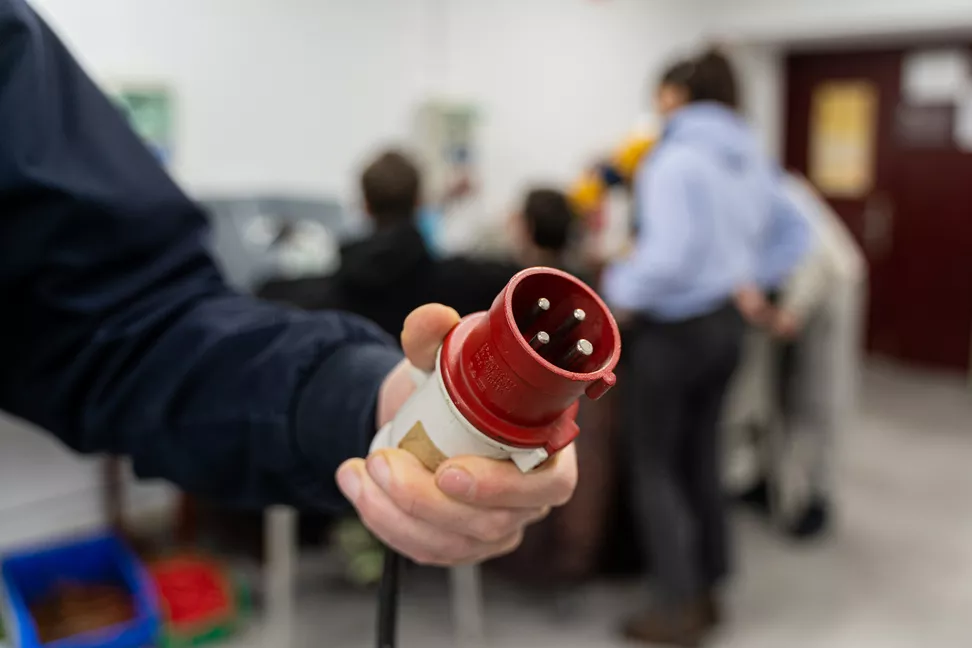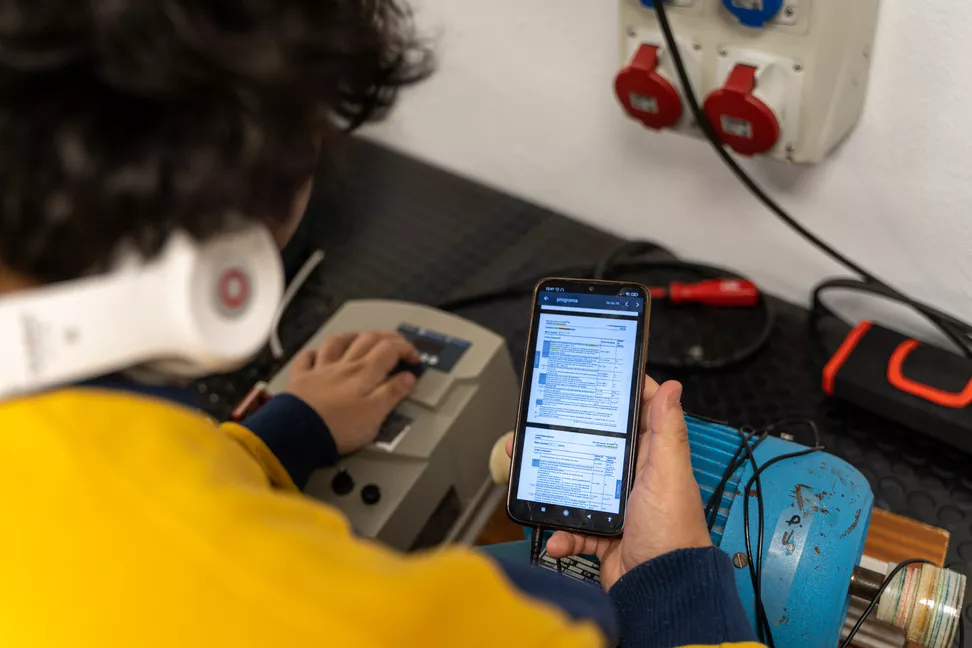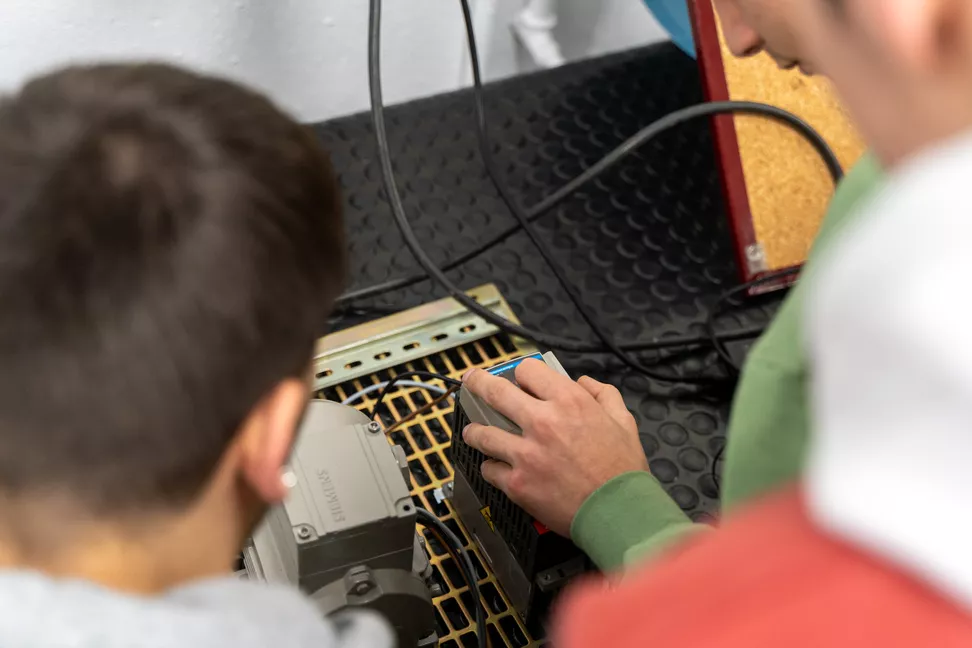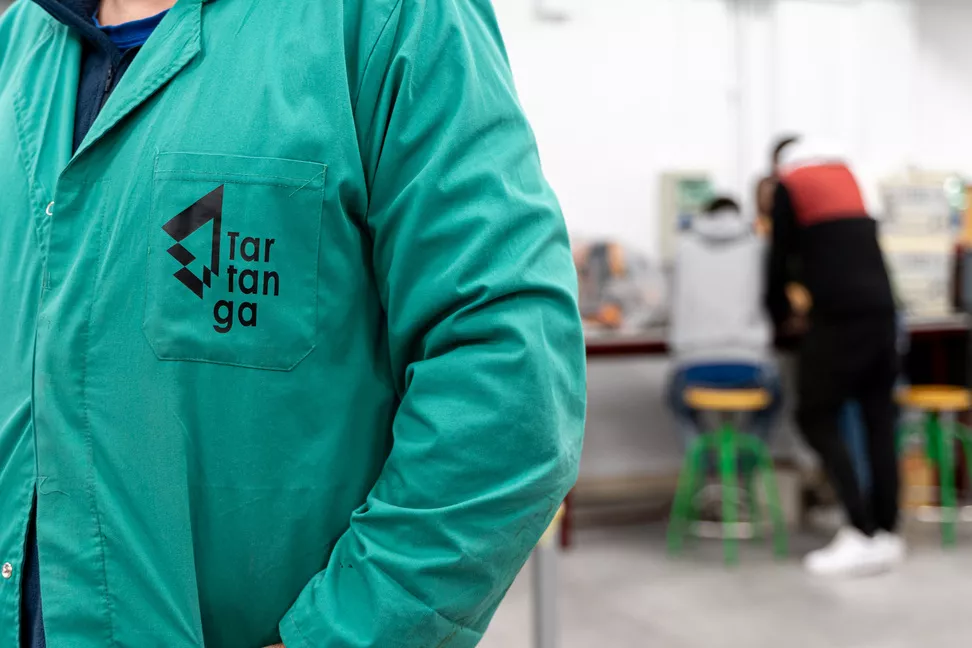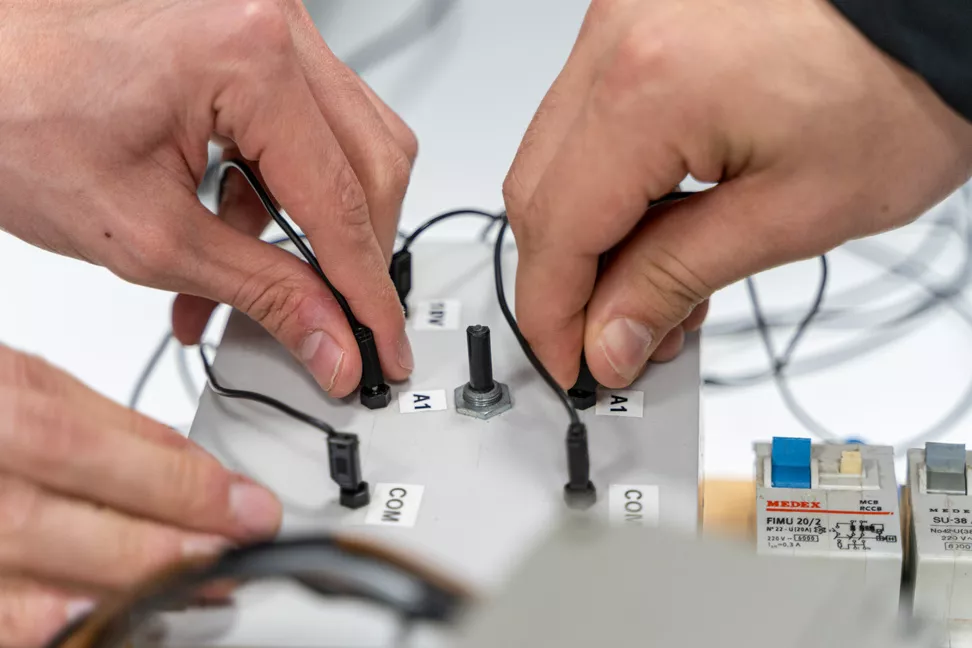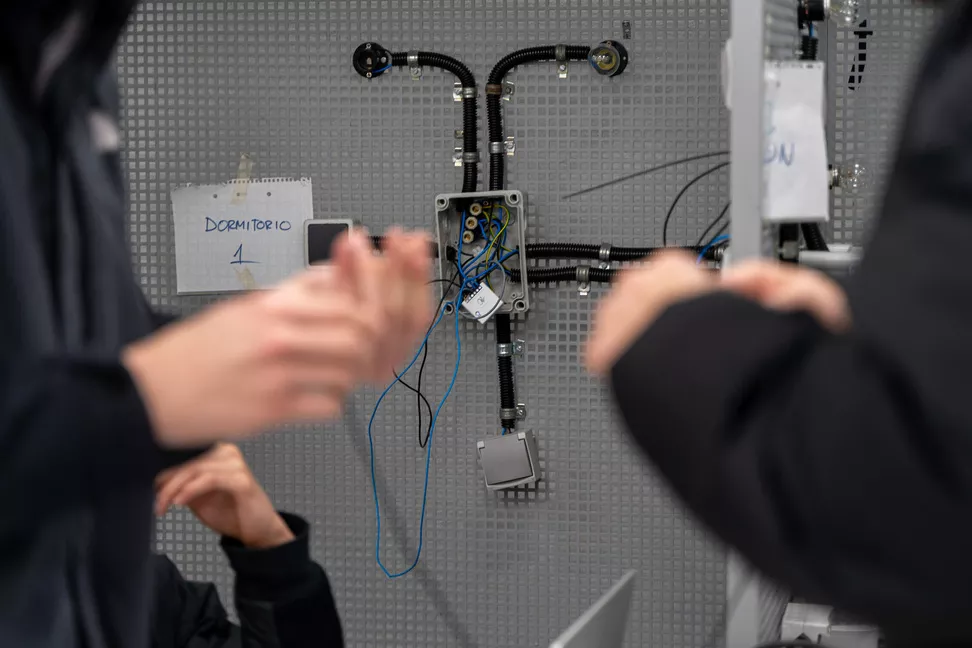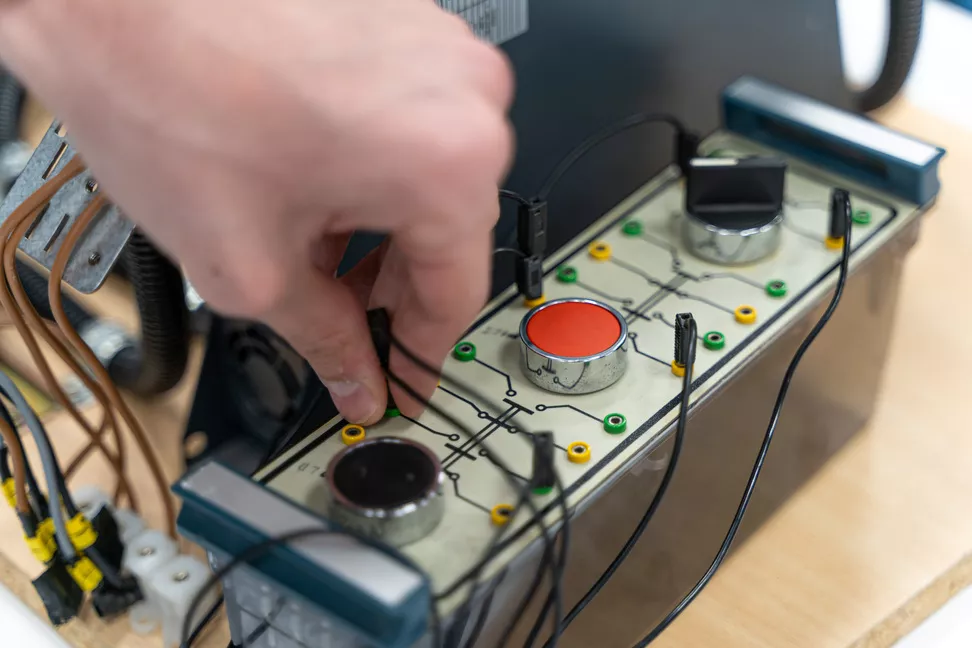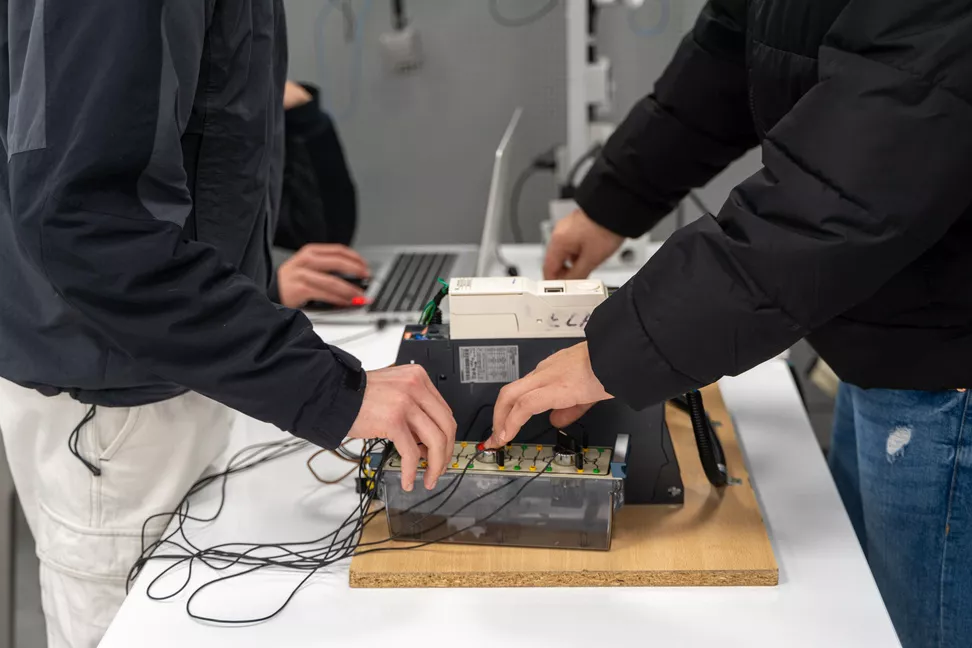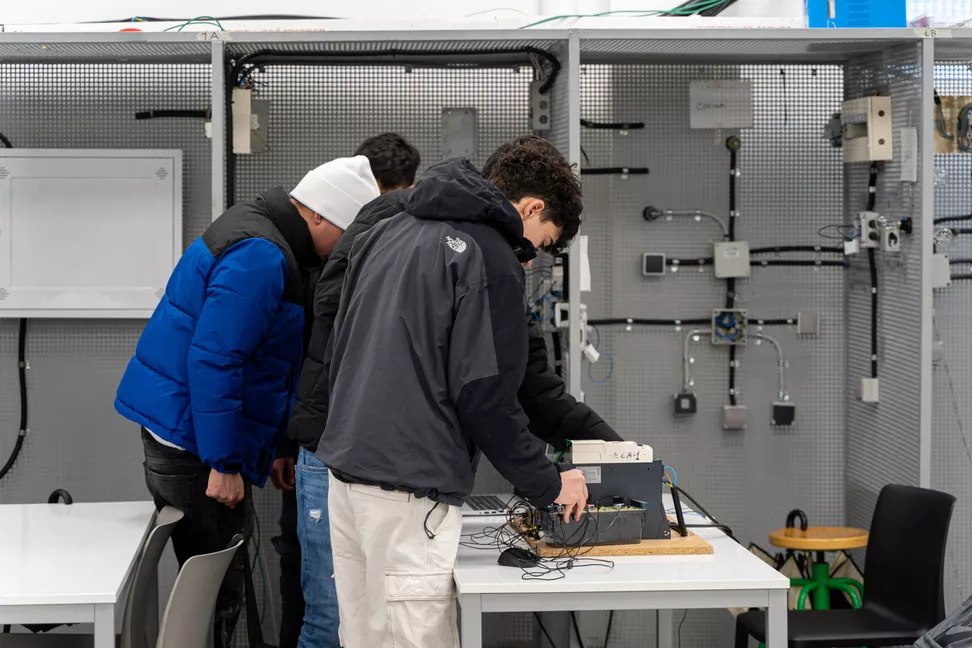The holder of this diploma will have acquired the General Competence with regard to:
- Developing projects and managing as well as supervising the installation and the maintenance of electrotechnical installations in accordance with the REBT (Spanish acronym for Electrotechnical Low Voltage Regulation).
- Supervising the maintenance of installations in common telecommunications infrastructures, based on technical documentation, specifications, established regulations and procedures, ensuring the functioning, the quality, the safety and the preservation of the environment..
| Professional Module | Hours-total | Year |
|
Processes in Common Telecommunications Infrastructure Installations
|
165 | 1st |
|
Electrical Installations Techniques and Processes
|
198 | 1st |
|
Technical Documentation in Electrical Installations
|
66 | 1st |
|
Electrical Systems and Circuits
|
165 | 1st |
|
Electrical Installations Configuration
|
198 | 1st |
|
Personal itinerary for employability I
|
120 | 1st |
|
Digitalization applied to productive sectors
|
60 | 1st |
|
Techniques and Processes in Home Automation and Automatic Installations
|
180 | 2nd |
|
Development of Electrical Networks and Electrical Substations
|
160 | 2nd |
|
Configuration of Domotic and Automatic Installation
|
160 | 2nd |
|
Management of the Assembly and the Maintenance of Electrical Installations
|
99 | 2nd |
|
Intermodular project
|
50 | 2nd |
|
Professional English
|
63 | 2nd |
|
Personal itinerary for employability II
|
63 | 2nd |
|
Sustainability applied to productive sectors
|
42 | 2nd |
|
Optional modules
|
84 | 2nd |
Access to the High-level courses or modules requires compliance with at least one of the following conditions:
- To be in possession of the Post-compulsory High School Diploma or a certificate proving that all subjects of the Post-compulsory High School have been passed.
- To have passed the third year of the Unified and Polyvalent Baccalaureate (BUP): Accreditation through academic certification of having passed all subjects leading to the Post-compulsory High School regulated by Law 14/1970, of 4 August, on General Education and Financing of Educational Reform, after completing the third year of aforesaid studies (Order EFP/1210/2021 of November 2, which establishes the equivalence, for the purposes of access to vocational training courses, of certain studies and qualifications prior to the current education system).
- To have passed the second year of the Experimental Post-compulsory High School (Bachillerato experimental).
- To be in possession of a Technician certificate (Intermediate-level Vocational Training).
- To be in possession of a Higher Technician or Specialist Technician certificate, or equivalent for academic purposes
- To have passed the University Orientation Course (COU).
- To be in possession of any university degree or equivalent.
- To have passed the entrance exam for higher-level training courses (it will be required to be at least 19 years old in the year the test is taken or 18 for those who have a Technician’s degree).
- To have passed the university entrance exam for those over 25 years old.
Either you work:
- This professional works in –mainly private– companies, focused on the development of projects, the management and supervision of assembly and maintenance of electrical installations in building surroundings and with specific ends, the installation of home and building automation systems, telecommunication infrastructures of buildings and low voltage electrical networks and automated systems, either as a self-employed person or as an employee.
Or you continue studying:
- Professional specialization courses.
- Another Higher-level Vocational Training course with the possibility of establishing validations of professional modules in accordance with current regulations.
- University studies, with the possibility of establishing validations in accordance with current regulations.
This professional will be able to:
- Develop projects and manage and supervise the assembly and maintenance of electrotechnical installations within the scope of the Low Voltage Electrical Regulations. This also involves supervising the maintenance of common telecommunications infrastructure installations, based on technical documentation, specifications, regulations and established procedures, ensuring operation, quality, safety, and environmental protection.
- Prepare the specifications report for installations/systems, obtaining data for the development of projects or technical reports.
- Calculate the technical characteristics of equipment, components, and installations, complying with current regulations and client requirements.
- Configure installations and systems according to specifications and regulatory requirements.
- Plan the assembly and testing of facilities and systems based on technical documentation or project specifications.
- Launch installation based on the installation schedule and the general project plan.
- Supervise installation processes, verifying their suitability for site conditions and monitoring their progress to meet company objectives.
- Supervise facility maintenance processes, controlling timelines and the quality of results.
- Put the facilities into operation, monitoring compliance with requirements and ensuring quality and safety conditions.
These teachings include the knowledge required to carry out basic level activities for the prevention of occupational risks.

